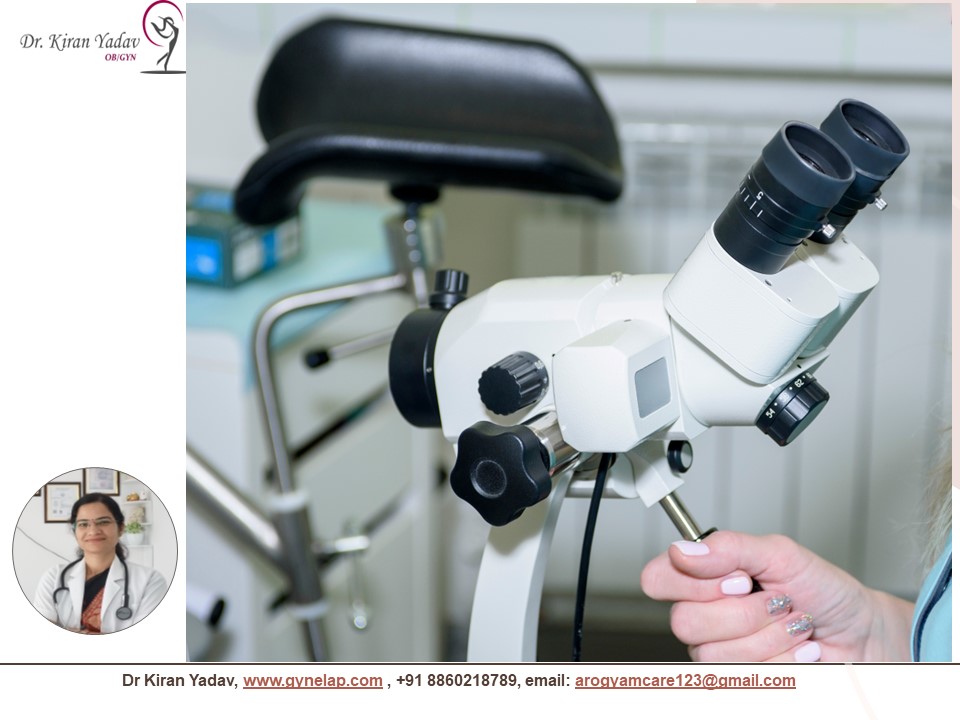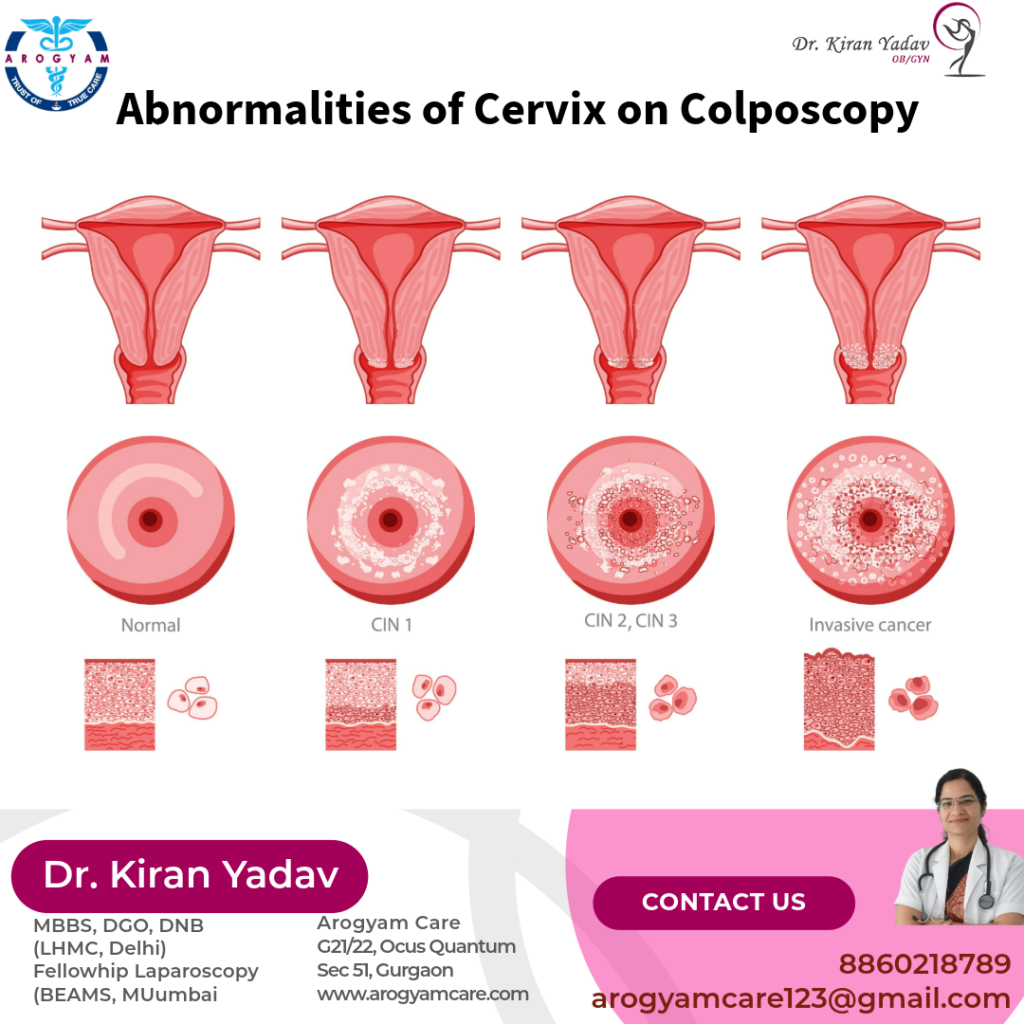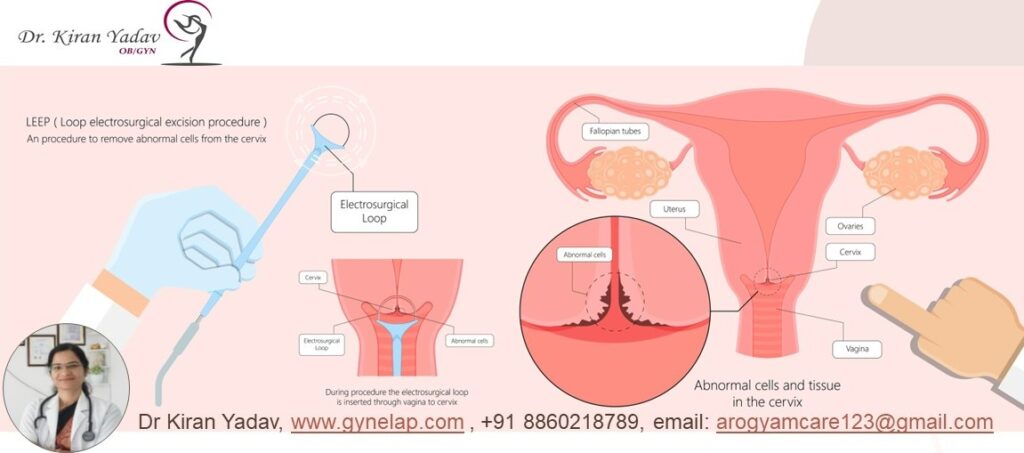Colposcopy: Understanding the Procedure and Its Importance
Colposcopy procedure is a kind of examination of cervix, vagina and vulva under magnification for signs of disease. It is usually done when a Pap test or an HPV test shows abnormal results and no visible problem on gross examination. It can help diagnose cervical cancer or precancerous changes in the cells of the cervix. Coloposcopy biopsy also detect other infection and changes in cervix like cervicitis.
A colposcopy is a medical procedure used to closely examine the cervix, vagina, and vulva for signs of disease. This procedure is often recommended if a Pap smear or pelvic exam reveals abnormal cells or other issues that need further investigation. It is a crucial tool in the early detection and prevention of cervical cancer.
Why Is a Colposcopy Performed?
A colposcopy is typically performed for several reasons:
- Abnormal Pap Smear: If a Pap smear shows abnormal or atypical cells, a colposcopy helps to identify the cause and determine if further treatment is needed.
- HPV Infection: Women who test positive for high-risk types of human papillomavirus (HPV) may need a colposcopy to check for potential pre-cancerous changes.
- Unexplained Bleeding: Persistent bleeding or spotting outside of normal menstrual periods may warrant a closer examination.
- Genital Warts: The presence of genital warts or other abnormal growths can be evaluated during a colposcopy.
The Procedure
A colposcopy is usually performed in a doctor’s office and takes about 10 to 20 minutes. Here’s what to expect:
- Preparation: The patient lies on an examination table, and a speculum is inserted into the vagina to keep it open, similar to a Pap smear.
- Examination: The doctor uses a colposcope, a special magnifying instrument with a light, to examine the cervix and surrounding areas in detail. The colposcope remains outside the body and does not touch the patient.
- Application of Solutions: A mild solution, such as acetic acid (vinegar), may be applied to the cervix to highlight any abnormal areas. This might cause a slight stinging sensation.
- Biopsy: If any suspicious areas are found, the doctor may take a small tissue sample (biopsy) for further analysis. This can cause mild discomfort or cramping.
After the Procedure
After a colposcopy, most women can return to their normal activities immediately, although it’s common to experience some light spotting or mild cramping, especially if a biopsy was taken. Your doctor will provide specific instructions for post-procedure care, including avoiding tampons, douching, or intercourse for a short period to allow healing.
Results and Follow-Up
The results of a colposcopy biopsy typically take a few days to a week. Based on the findings, your doctor will recommend the next steps, which could include:
- Normal Results: If no abnormal cells are found, you may simply return to regular screening schedules.
- Abnormal Results: If pre-cancerous cells or other abnormalities are detected, your doctor may suggest further treatment, such as cryotherapy, laser therapy, or loop electrosurgical excision procedure (LEEP) to remove the abnormal tissue.
Importance of Colposcopy
A colposcopy is a vital procedure for the early detection and management of cervical abnormalities. By identifying and addressing issues early, it significantly reduces the risk of cervical cancer and other serious conditions. If your doctor recommends a colposcopy, it’s important to follow through with the procedure to ensure your long-term reproductive health.

During a colposcopy test, the doctor uses a special instrument called a colposcope, which is like a pair of binoculars on a stand with a bright light. The colposcope does not touch the patient or go inside the vagina. The doctor inserts a metal speculum into the vagina to hold it open and see the cervix. The doctor then applies a vinegar-like solution to the cervix, which makes abnormal cells appear white. The doctor looks at the cervix through the colposcope and may take a small sample of tissue (a biopsy) from any suspicious areas. The biopsy is sent to a laboratory for further testing.
Uses of colposcopy
The primary purpose of its the early detection of cervical abnormalities. It is commonly used in the following scenarios:
- Abnormal Pap Smear Results: It is often recommended when a Pap smear, which is a screening test for cervical cancer, shows abnormal results. The procedure helps determine the extent of cell changes and guides subsequent treatment decisions.
- Human Papillomavirus (HPV) Infection: HPV is a common sexually transmitted infection linked to cervical cancer. It is used to assess cervical changes in women with persistent HPV infections and precancerous changes caused by it- cervical intraepithelial neoplasia (CIN).
- Unexplained Symptoms: If a woman experiences unusual symptoms such as bleeding between periods, after intercourse, or after menopause, colposcopy might be performed to investigate the underlying cause.
Loop Electrosurgical Excision Procedure (LEEP)
effective treatment for cervical dysplasia, which is a precancerous condition of the cervix. LEEP uses a thin wire loop that carries an electric current to cut away the abnormal tissue from the cervix. LEEP has advantages over other methods such as cryotherapy or laser therapy:
- remove more tissue, less recurrence.
- tissue sample for further testing.
- fewer complications such as bleeding, infection, or scarring.
- less expensive and more convenient as it does not require general anesthesia.




